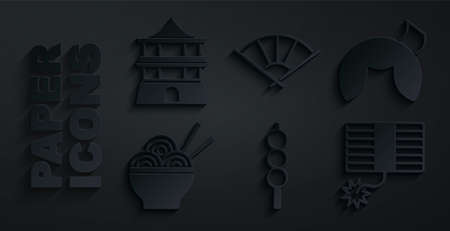Introduction to Lucky Symbols in Western Culture
When you walk into many American homes, you might notice small decorative items that seem to have a story behind them. Whether its a horseshoe above the door or a four-leaf clover tucked into a picture frame, these lucky symbols are more than just decoration—theyre thought to invite good fortune and prosperity. But where do these traditions come from, and how have they become such an important part of Western household culture?
The Historical Roots of Lucky Symbols
The use of lucky symbols in Western culture dates back centuries. Many of these charms have origins in European folklore, ancient Roman practices, or early American superstitions. Over time, families carried these beliefs across generations, blending old-world customs with new traditions in the United States. As communities grew more diverse, lucky symbols from different cultures found their way into the American home.
Cultural Integration in Modern Homes
Today, lucky symbols are not only cherished for their supposed mystical properties but also valued as meaningful keepsakes and conversation starters. They often reflect both the cultural heritage and personal beliefs of the homeowners. In neighborhoods across America, its common to see a variety of lucky items displayed in creative ways—on front doors, mantels, or as part of seasonal décor.
Common Lucky Symbols in Western Households
| Lucky Symbol | Origin | Believed Benefit |
|---|---|---|
| Horseshoe | European Folklore | Protection and Good Luck |
| Four-Leaf Clover | Irish Tradition | Prosperity and Rare Good Fortune |
| Lucky Penny (Heads Up) | American Superstition | Financial Luck |
| Wishbone | Ancient Roman/Early American | Granting Wishes and Success |
A Blend of Old and New Beliefs
The appeal of these symbols lies in their ability to bridge past and present. Whether adopted for nostalgia, aesthetics, or genuine belief in their power, lucky charms remain a subtle yet significant way Americans hope to attract prosperity into their lives.
2. Popular Lucky Symbols and Their Meanings
Well-Known Prosperity Symbols in American Homes
Many Western homes include lucky symbols that are believed to attract good fortune, wealth, and happiness. While these symbols may have ancient roots, they remain popular today for their positive associations and decorative appeal. Let’s explore some of the most cherished prosperity-attracting items you might find in homes across the United States.
Common Lucky Symbols and Their Traditional Interpretations
| Symbol | Meaning | Typical Placement or Use |
|---|---|---|
| Horseshoe | Brought from European folklore, a horseshoe is considered a powerful protector against bad luck and evil spirits. When hung above a door with the ends facing upwards, it is thought to catch and hold good luck for the household. | Above entry doors, sometimes inside or outside the home |
| Four-Leaf Clover | This rare clover symbolizes hope, faith, love, and luck. Finding one is thought to bring unexpected fortune, making it a favorite motif in both décor and jewelry. | As art prints, small tokens, or even pressed clovers in frames |
| Lucky Coin (e.g., a penny found heads up) | The saying “Find a penny, pick it up; all day long you’ll have good luck” reflects the belief that coins can bring prosperity—especially if found by chance with the heads side up. | Carried in wallets or kept in special dishes at home entrances |
| Lucky Bamboo | Although its origins are Asian, lucky bamboo has become an American staple for attracting prosperity and growth due to its easy care and pleasing appearance. | In living rooms, offices, or kitchens as potted plants |
| Acorns | An ancient symbol of potential and abundance. Keeping acorns around the house is said to bring luck and protection. | Displayed in bowls or used as seasonal decorations |
How These Symbols Influence Home Atmosphere
Lucky symbols do more than add style—they help create a welcoming atmosphere filled with optimism and hope. Whether you believe in their magic or simply enjoy their charm, incorporating these icons into your home can be a fun way to invite positivity and prosperity into everyday life.

3. Modern Adaptations in American Home Décor
In today’s America, lucky symbols are not just reserved for special occasions—they have become a fun and meaningful part of home décor. Many people love blending these traditional signs of good fortune with modern styles to create spaces that feel both inviting and prosperous. Here’s how some popular lucky symbols are finding their place in contemporary American homes:
Popular Lucky Symbols and Their Modern Uses
| Lucky Symbol | Traditional Meaning | How Its Used Today |
|---|---|---|
| Horseshoe | Protection, Good Luck | Mounted above doors, used as wall art, or featured in rustic décor themes |
| Four-Leaf Clover | Luck, Hope, Faith, Love | Seen on pillows, prints, small sculptures, and even kitchen towels for a cheerful vibe |
| Elephant Figurine | Strength, Wisdom, Protection | Placed near entryways or living rooms—often with the trunk up for extra luck |
| Lucky Penny | Wealth, Prosperity | Displayed in shadow boxes or kept on desks as a playful reminder of good fortune |
| Evil Eye Amulet | Wards off Bad Energy | Used as decorative charms on keychains, jewelry stands, or hung near windows |
Blending Tradition with Contemporary Style
American homeowners often mix these symbols with their favorite interior design trends. For example, a minimalist room might feature a single elegant horseshoe above the entrance, while a boho-style space could include several elephant statues and evil eye charms scattered among plants and cushions. The goal is to add personal touches that reflect both tradition and modern taste.
The Role of Color and Placement
The placement and color of lucky symbols can also matter. People choose bright green for four-leaf clovers to bring fresh energy into their kitchens or opt for gold-toned horseshoes in entryways to welcome wealth. Elephants may be positioned facing the door to invite positive vibes inside.
Lucky Symbols in Everyday Life
Lucky symbols aren’t just for show—they often become part of daily routines. Some families make it a habit to touch a lucky penny before leaving for work or keep an evil eye charm by the front door to remind everyone of protection and safety. These little rituals help make prosperity and positivity an everyday experience.
4. Psychological Impact on Well-being and Prosperity
In many Western homes, lucky symbols like horseshoes, four-leaf clovers, or even a simple bowl of coins are more than just decor. They play a subtle but meaningful role in boosting the mental and emotional atmosphere of a living space. When people display these symbols, they often feel more optimistic about their future and daily life. This sense of hopefulness can translate into real motivation and confidence, helping homeowners pursue their goals with greater enthusiasm.
How Lucky Symbols Influence Our Mindset
Displaying lucky symbols can serve as daily reminders that good things are possible. For example, seeing a horseshoe above the door might make someone pause and feel grateful for protection and opportunity. This positive mindset helps reduce stress and encourages a sense of security within the home.
Common Psychological Benefits
| Lucky Symbol | Emotional Effect | Mental Benefit |
|---|---|---|
| Horseshoe | Feeling protected | Boosts confidence to take risks |
| Four-leaf Clover | Sparks hope | Encourages optimism for new opportunities |
| Bowl of Coins | Sense of abundance | Motivates financial planning and saving |
| Lucky Number Decor (e.g., 7) | Personal significance | Strengthens positive thinking habits |
The Power of Optimism, Confidence, and Motivation
When people believe that luck is on their side, they tend to approach challenges with more energy and resilience. This mindset shift doesn’t just impact finances; it also improves overall well-being. The act of choosing and displaying lucky items makes the home feel more personal, welcoming, and full of potential. In turn, this supportive environment nurtures both emotional health and the drive to achieve prosperity.
5. Tips for Incorporating Lucky Symbols in Your Space
Choosing the Right Lucky Symbols for Your Home
When selecting lucky symbols for your home, consider both their traditional meanings and how they fit with your personal style. Popular symbols in Western homes include horseshoes, four-leaf clovers, acorns, and coins. Each symbol carries its own unique energy and can be displayed in different ways to attract prosperity.
| Lucky Symbol | Meaning | Best Placement |
|---|---|---|
| Horseshoe | Protection & Good Luck | Above entry doors, open end facing up |
| Four-Leaf Clover | Fortune & Opportunity | Living room or workspace, framed or as decor item |
| Acorn | Growth & Prosperity | Near windows or on shelves in the living area |
| Coins (especially pennies) | Wealth & Abundance | Bowl near entrance or on office desk |
Selecting Materials and Colors That Attract Prosperity
The materials and colors of your lucky symbols can enhance their positive effects. For example, metal objects like brass horseshoes are believed to amplify protection and luck. Green and gold are classic prosperity colors in Western culture—consider these hues when choosing decor items or picture frames for your lucky symbols.
Quick Tips:
- Avoid clutter: Place only a few meaningful symbols rather than overcrowding your space.
- Keep them visible: Lucky items work best when displayed in open areas where you can see them daily.
- Cultural blends: Feel free to mix traditional Western symbols with others that resonate with you, such as elephants or crystals.
- Personal connection: Choose symbols that have a special meaning to you or your family for added positive energy.
Clever Ways to Display Lucky Symbols in Modern Homes
You don’t need to sacrifice style for symbolism. Modern Western homes can integrate lucky charms seamlessly into any decor style:
- Add a small bowl of coins on a contemporary console table by the front door.
- Frame a pressed four-leaf clover in a minimalist black frame and hang it above your workspace.
- Select stylish bookends shaped like acorns or animals known for good fortune, such as owls.
- Hang a sleek metal horseshoe above the main entrance, painted to match your home’s color palette.
Remember:
The key is intentional placement and thoughtful selection. By choosing lucky symbols that suit your taste and arranging them purposefully around your home, you invite positive energy and prosperity into your everyday life.
